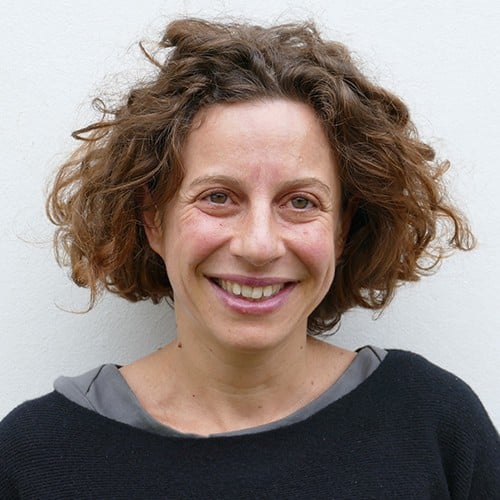NEW IDEAS IN COMPLEXITY SCIENCE
On May 24th, 2018, the First External Faculty Meeting of the Hub started with a public conference.
In short talks complexity scientists from all around globe shared their visions on the question “Complexity: Where do we go from here?”
What are the open, the most pressing, the most promising questions to an understanding of complexity and Big Data?
Find the talks of all conference participants (in order of appearance) on our Youtube channel in the playlist of the conference.
An overview with photographs of the event and links to all available slides can be found here.
FRANCESCA TRIA
“WE OFTEN HAVE TO DEAL WITH OPEN SYSTEMS.”
Francesca Tria, a researcher at the physics department of Sapienza University of Rome, speaks about the challenge to deal with change, that is, with the continuous entering of new, not-yet known, elements to the system.
When we make an observation, Francesca begins, it can happen in two ways. In one case we observe something that we have observed before. In the other case though, we come across something completely new: something that is not covered by any previous knowledge.
This continuous entering of new elements to a system is the rule rather than the exception, as “Life is change,” says Francesca. Although quite trivial as a statement, this fact is very important from a mathematical and theoretical point of view, she adds. That is, when it comes to make (rather: to compute) predictions.
Francesca distinguishes between novelty and innovation.
“A novelty is an innovation at an individual or local scale,” she explains: “For instance the first time that I listen to a song.” A true innovation, on the other hand, is the first time a song is written, that is, “when something new appears that was not in the world before.”
Why is it important to make this distinction?
“Because we found out that in many respects for many statistical properties, novelties and innovations follow the same dynamics,” Francesca points out. “This gives us a great opportunity, because novelties are much more common than innovations. So we can hope to have good statistics for novelties.”
This means, looking at novelties could eventually help to understand true innovation, too.
Francesca mentions the adjacent possible, a concept once introduced by Stuart Kauffman. “The adjacent possible consists of all those things that are one step away from what actually exists,” Francesca explains. “The important thing about it is that it is not a fixed space, but is something that modifies and enlarges when we touch its boundaries. For instance, if I meet a new friend, all his friends become a new possibility for me.”
It is very difficult to characterize this space. But today we have new tools at hand to approach it, Francesca says. “We have the Web!” The Web allows to conduct experiments involving large numbers of humans. “The Web is something that people started and something that is complex by itself,” Francesca concludes. “This opens new perspectives and new questions.”
CLICK FOR FRANCESCA’S SLIDES.
See the video in full lenght here:

